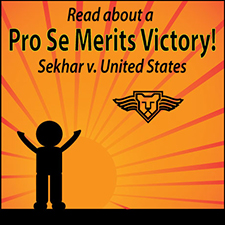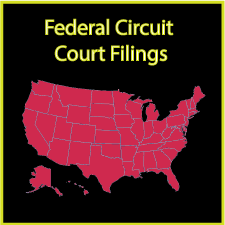Stogner v. Sturdivant & Mellerine (Fall 2013)
The Supreme Court Press "Petition of the Month"TM for September 2013 is Michelle Stogner v. Chris Sturdivant and Brandt Mellerine. No. 12-30867 (5th Circuit, Feb. 2013) filed by Peter Q. John of The Q Law Firm of Baton Rouge, Louisiana.
Questions Presented:
Whether officers who brutally assaulted a person resulting in his death are entitled to qualified immunity, when the victim was not actively resisting, did not pose a physical threat, and was not fleeing, the specific requirements of the Fourth Amendment “objective reasonable” standard articulated by this Court in Graham v. Connor, 490 U.S. 386 (1989). Furthermore, whether the Court of Appeals erred when it stated that there was no distinction between active and passive resistance in justifying the use of police violence.
Qualified Immunity is a powerful thunderbolt for striking down lawsuits against government officials, including police officers, but the guidelines for hurling this cosmic energy can be as arbitrary as the moods of Zeus and Hera. In Graham v. Connor, 490 U.S. 386 (1989), the Court laid out a three part in police brutality cases: Qualified immunity might be granted where the person (1) actively resisted arrest; (2) posed a physical threat; or (3) fled arrest. In Stogner, the 5th Circuit more or less conceded that the victim's (Mr. Stogner's) conduct did not meet any of the three criteria, but nonetheless granted Officers Sturdivant and Mellerine qualified immunity. The 5th Circuit based its decision on the victim's resistance to handcuffing and his attempt to hide a small package, later tested to be drugs. The 5th Circuit stated that it was no matter whether Stogner's resistance was active or passive. Does Stogner signal new tolerance for police violence against passive resistance? What would have happened if the victims were passive civil rights protesters? What if they were environmental activists chained to a tree? Or, was Stogner simply an outlier where the 5th Circuit was unsympathetic to the death of an alleged drug user? Here is the Dashcam video from the incident: |

| Mr. John, thank you for sitting down to discuss the Stogner case with us. | |
| My pleasure. This is an important case that needs to be shared. | |
| You have a lot of passion for the Stogner case. Why is this case important to you? | |
This case sheds much needed light on the ever-increasing tension between the rights of the individual citizens and that of the state. We must protect citizens against the acts of the government that rob us of life, liberty, and the pursuit of happiness without due process. We must closely scrutinize every action of the police and law enforcement, and take the opportunity to protect ordinary citizens from them, because currently they have the most power in the entire judicial system. They can dish out death on the street corner late at night without any input from a Judge or Jury. This case can affect how an officer treats you or your family at a traffic stop. |
|
| When you tried the case in the district court, were you concerned at the time about a qualified immunity finding? Were you surprised by the decision? | |
I knew this case would go forward from the 12b (6) phase to the Summary Judgment phase, giving us a better chance to have the facts heard on the use of force. I was surprised that the Judge would set this dangerous president in motion—basically stating that it’s ok for police to choke citizens to death to preserve what they believe to be evidence, even when the officer has no knowledge that an offense has been committed. Limits have to be placed on law enforcement violence, just like it is on ordinary citizens. Too much technology exists today that can potentiallyl provide law enforcement with what it claims to be evidence, even if swallowed. This decision stamps approval on police acts of violence in response like those of Officer Sturdivant. |
|
| Did you have an eye to the appeal during the district court proceedings? | |
Not only did I consciously develop the record to prepare for a potential appeal during the district court hearings, I specifically did so during depositions. I am certain that if we get to trial, the admissions of the officer during his deposition will dictate the outcome. |
|
Although the Graham factors seem pretty clear, the 5th Circuit seemed to disregard them. Were you surprised about that? Or has the 5th Circuit jurisprudence in this area been leaning toward qualified immunity grants? |
|
The 5th Circuit did not follow well-established constitutional law as interpreted by the Supreme Court in Graham. The western half of the 5th Circuit appears to evaluate Newman vs. Guedry, No. 11-41192, (5th Cir. 2012), as directed by Graham, but the eastern half seems to believe that, despite the officer's admission that he could have stepped back and used a less lethal means to get suspect’s compliance, does not implicate Graham factors. Clearly, the court contemptuously abdicated its duty to provide guidance and instead exhibited absolute bias in favor the police. They offered a superficial analysis in a case where the rights of an individual had been violated by heavy handed police conduct to the point of death. This is exactly the type of case the Supreme Court envisioned when it held that the Graham factors are the controlling bright line test for reviewing police brutality. |

One thing we liked about your appeal was that it was laser focused on a single clear issue. Was it difficult narrowing the scope of the appeal? |
|
| The process of layer editing through law clerks and attorneys allows us to constantly step back and reconsider our focus. We held meetings to specifically discuss proper focus for each level of review. The 5th Circuit and the United States Supreme Court each had a slightly different focus. | |
Were you surprised at the recitation of “facts” by the 5th Circuit and the omission of a mention of any beating sustained by Mr. Stogner? |
|
Yes. This fact is most appalling and shows a jaundiced eye toward due process. Officer Sturdivant struck Mr. Stogner numerous times and Mr. Stogner never struck back, not even once, even though Stogner was a larger man than Sturdivant. That is a significant fact that should not have been overlooked by the courts in the appropriateness of force analysis. |
|
| Do you have any final thoughts to share? | |
| I just wanted to thank your team. The Supreme Court Press was more to us than just a printer. You helped us step back from our passion-driven sense of purpose to right this wrong. Between edits and suggestions, we were able to step back and re-look at our structure, focus, and content. More than just a press, Supreme Court Press was like a silent senior partner that raised our level of performance. Thank you. |
 The Supreme Court Press was more to us than just a printer. You helped us step back from our passion-driven sense of purpose to right this wrong. Between edits and suggestions, we were able to step back and re-look at our structure, focus, and content. More than just a press, Supreme Court Press was like a silent senior partner that raised our level of performance. - Peter Q. John
The Supreme Court Press was more to us than just a printer. You helped us step back from our passion-driven sense of purpose to right this wrong. Between edits and suggestions, we were able to step back and re-look at our structure, focus, and content. More than just a press, Supreme Court Press was like a silent senior partner that raised our level of performance. - Peter Q. John 


---Bryan-Krumm.png)
---ZoeSpencer.png)


